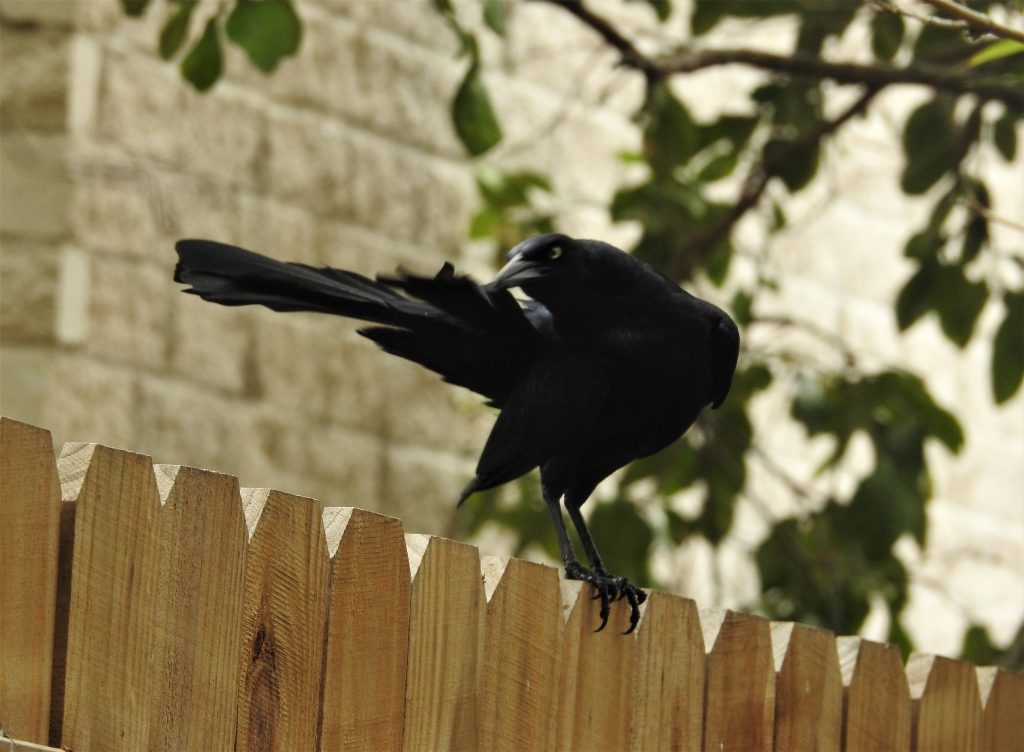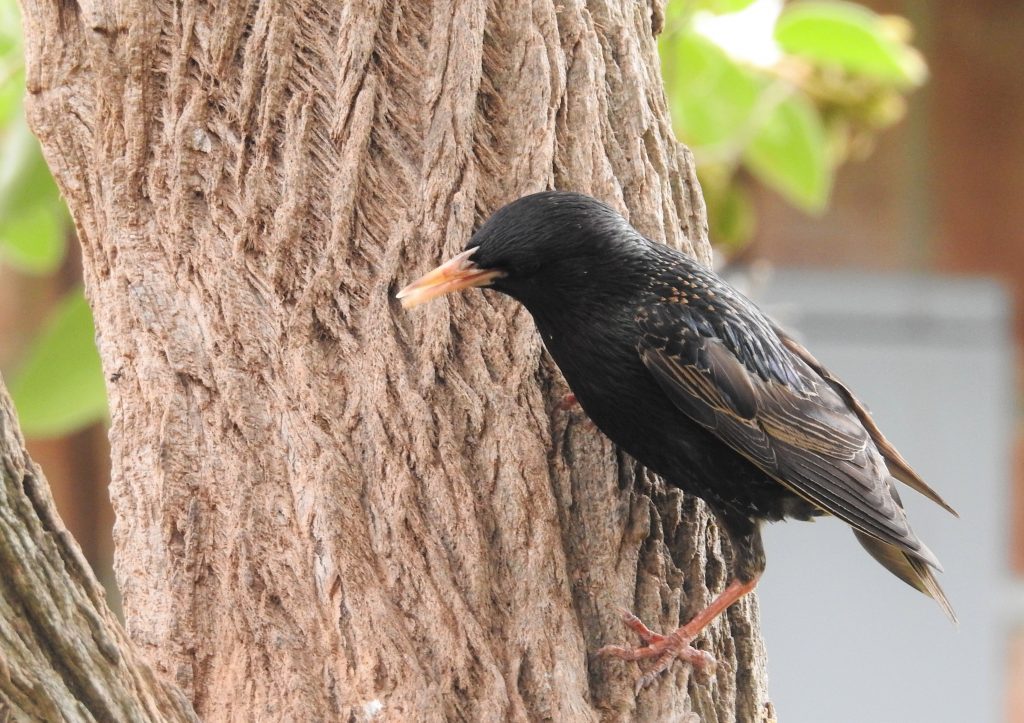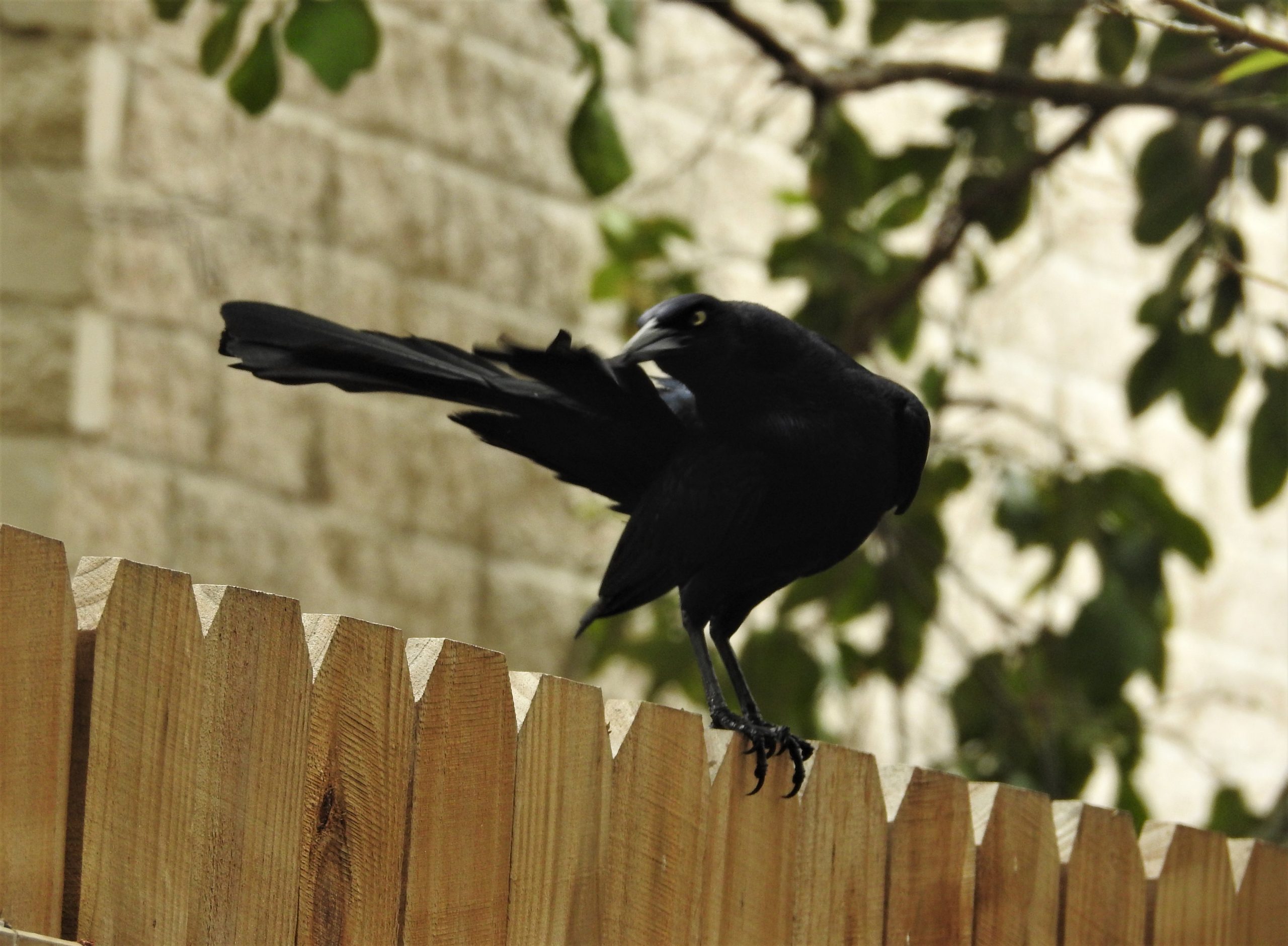by M. Kathy Raines
“Did you see any birds?!” an enthusiast asks. Another replies, resignedly, “No, not really, just trash birds.” While we may not say this, we often think it. And no birder looks fondly upon a squawking Great-tailed Grackle devouring pulp from oranges lovingly set out for famished little migrants.

This April, a few gorgeous Rose-breasted Grosbeaks, a Summer Tanager and assorted warblers graced our backyard feeders, along with rampaging migratory red-wings. Now we’re back to our usual customers: Great-tailed Grackles,House Sparrows, Black-crested Titmice, Curved-billed Thrashers, various doves and mockingbirds, Starlings, Golden-fronted Woodpeckers, Great Kiskadees, Buff-bellied Hummingbirds, and the occasional oriole. And I love them no less. Great-tailed Grackle (Quiscalus mexicanus)
It seems we human beings delight not only in classifying our fellow creatures, but in assessing their beauty and goodness as well as their rarity—though, ideally, we do what we can to assure the survival of those who struggle. Anyway, we rate everything—food, movies, cars, even ourselves—so why should our fellow creatures escape our judgment? And, of course, no bird takes offense at being called humdrum or a “trash bird.”
We come to our judgmental views of creatures honestly. Aristotle believed a ladder of life forms ascended from lowly to godly, with mankind, naturally, at the top. Then nineteenth century Swiss-American biologist Louis Agassiz alleged that an accurate hierarchy of organisms shone light on God’s intentions and perhaps instructions. He also judged other creatures on, for example, the care, if any, they lavished upon their young. Said creatures had no say-so in this matter. Oddly, though, we humans often expect them, like us, to be upright, respectful, honest, and attentive to their families.
We do lots of anthropomorphizing—giving human attributes to creatures. Sometimes, rather than admiring the Great-tailed Grackle, which is savvy enough to scour parking lots for crumbs and cannily dives for a morsel of dog food the second it appears, we condemn it for its opportunism—for devouring treats set out for its betters—and for occasionally killing baby birds. Attentive observers of grackles thrill to their sky-pointing, range of vocalizations—clicks, whistles, shrieks, croaks—and the male’s inimitable fluffed-out, hunched-over, chattery pursuit of females. And the huge males, with iridescent purplish feathers, reflect colors magnificently.

Yes, House Sparrows and European Starlings—both imported from Europe in the 1800s—are not even natives, the latter having been transported in a well-intended attempt to populate America with all of Shakespeare’s birds. But they didn’t ask to come. And House Sparrows have such handsome brown and white patterns. Shimmering glitter, it seems, adorns the backs of male Starlings. Many exult at Starlings’ spectacular winter murmuration, or intricate patterns of mass swooping, and what a pleasure to see their thousands sitting companionably—well, with some altercations— on power lines. European Starling (Sturnus vulgaris)
It is not only House Sparrows, Starlings and such which are undervalued. Astounded by the vivid males, inexperienced birders like me may overlook the often duller-colored females—the greenish Painted Bunting or the brown-streaked Rose-breasted Grosbeak, for instance.
Now the Bronzed Cowbird, a handsome, red-eyed blackbird, is indeed problematic. Not deigning to build a nest of its own—in itself, a fascinating phenomenon— it lays eggs in nests of other birds, and, naturally, the cowbird has no idea that some of these birds face possible extinction. This cowbird wreaks plenty of damage.
Cowbird chicks—large, plentiful, and early-hatching—often demand all the attention and resources of their unwary hosts, to the expense of the birds’ own offspring, which often die. In South Texas, these duped parents often include Green Jays,Long-billed Thrashers, nNorthern Mockingbirds, Cardinals and various orioles. Still, Cardinal parents have been observed tending to their own chicks, along with the cowbird adoptees.
While it’s tempting to view the cowbird as lazy and heartless—why doesn’t it, like other birds, build its own nest?—the bird, like us, is getting along in this world as it best knows how.
Then we have the glorious raptors. Many of us thrill to watch a White-tailed Kite hover like a marionette or Harris’s Hawks resting, sometimes one atop another, but do not so relish the sight of a crew of Turkey or Black Vultures tearing into a dead javelina. And while many athletic teams are named Hawks and Falcons, very few adopt the vulture as a mascot. Still, these intriguing, resilient birds scrub our world clean.
Granted, I feel some dismay when a flock of Red-winged Blackbirds shoves everyone out of the way to engulf my bird food. And my heart stirs more at seeing an Altamira Oriole than a Great-tailed Grackle. Still, these generalists, these spunky survivors, disturb beloved and endangered species through no fault of their own. As Aristotle proclaimed, we are the top species. We do appear to be in charge of affairs, at least for the present. And, as such, it is our onus to provide and preserve rich, unfractured habitat for our fellow creatures, who, like us, are making a living as best they can.


Leave a Reply